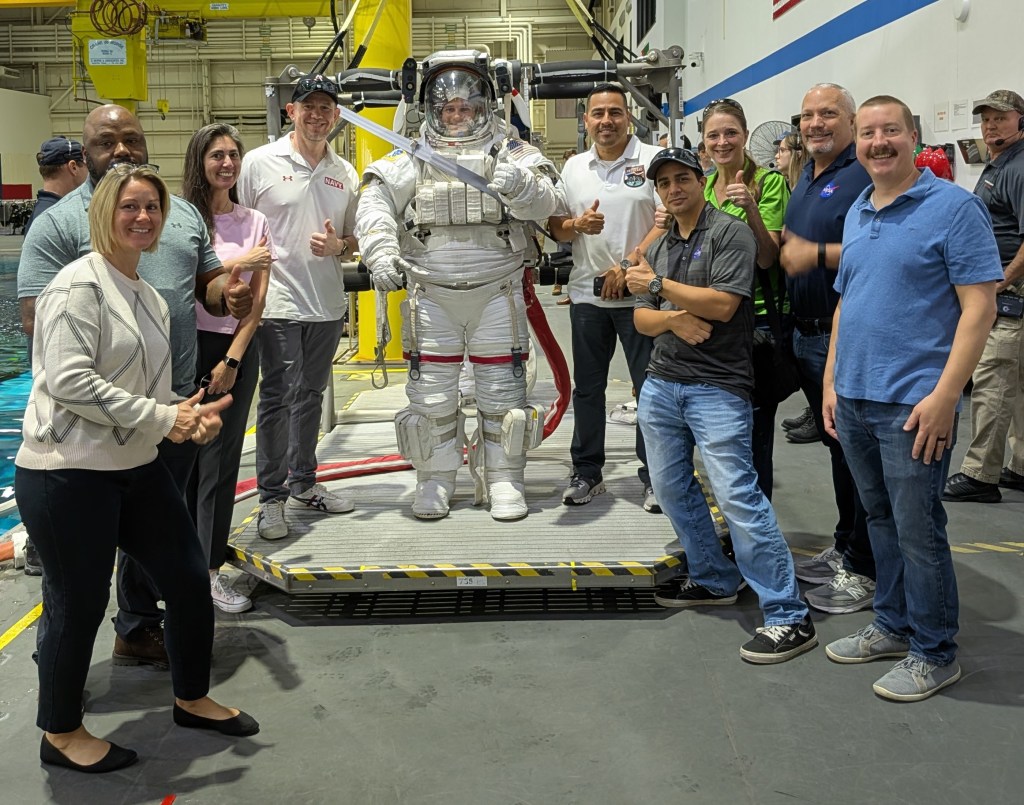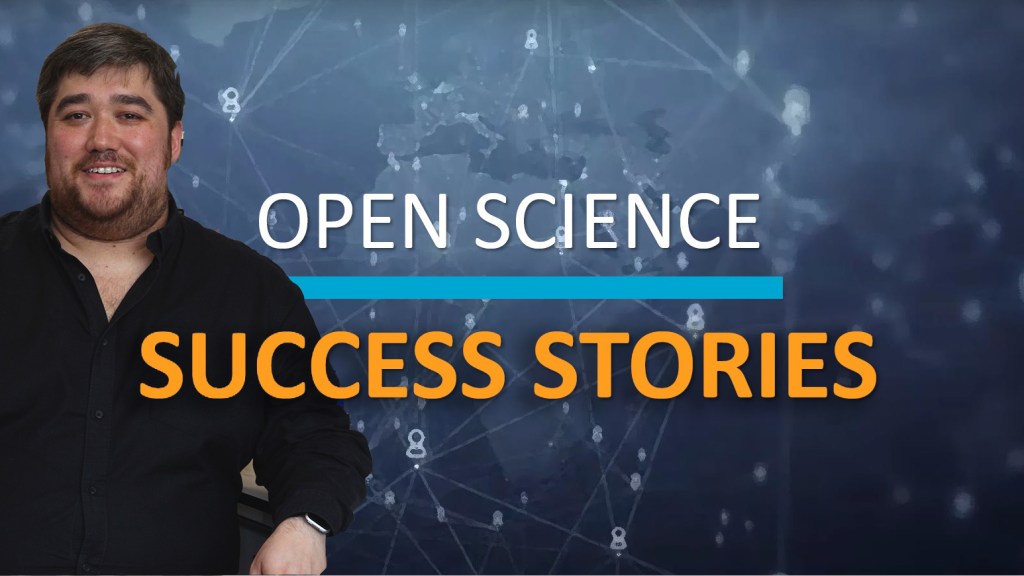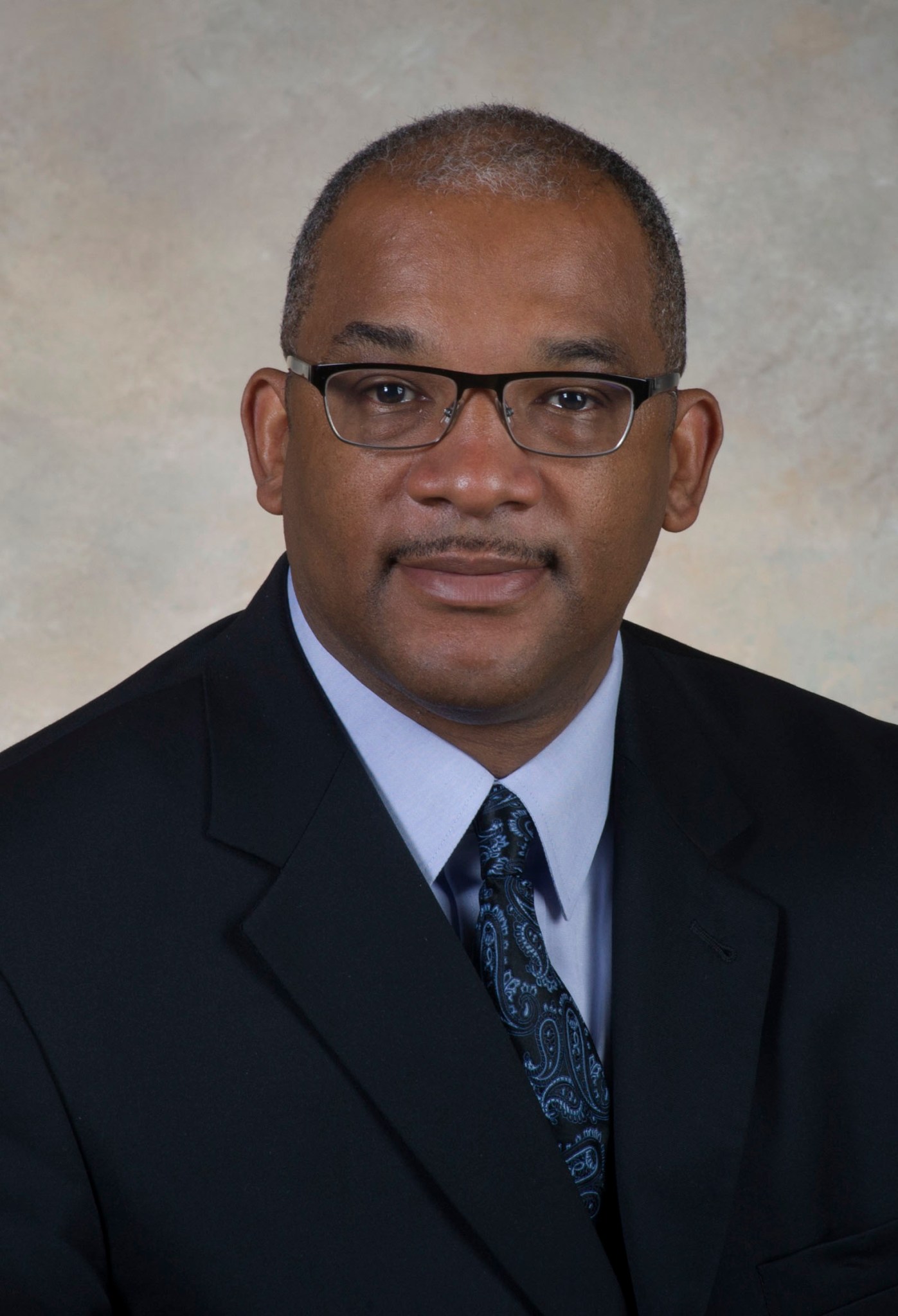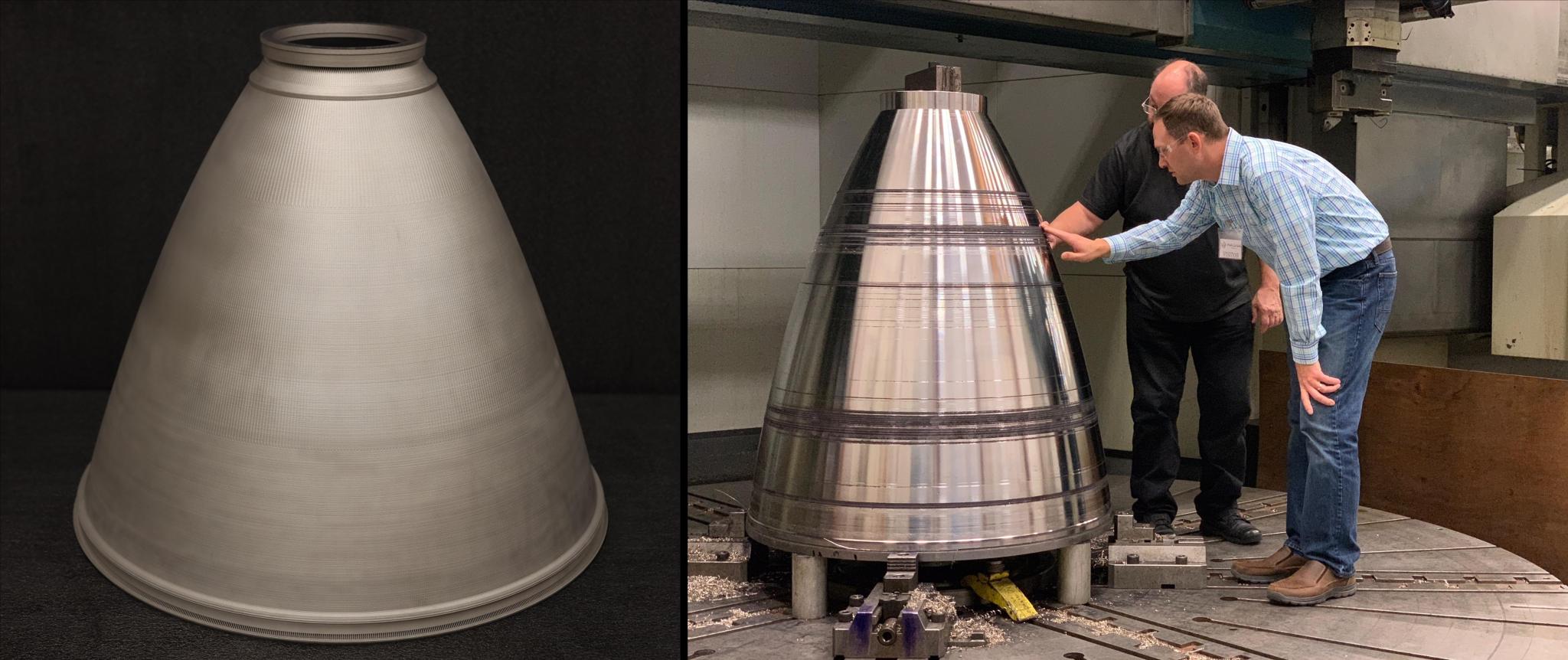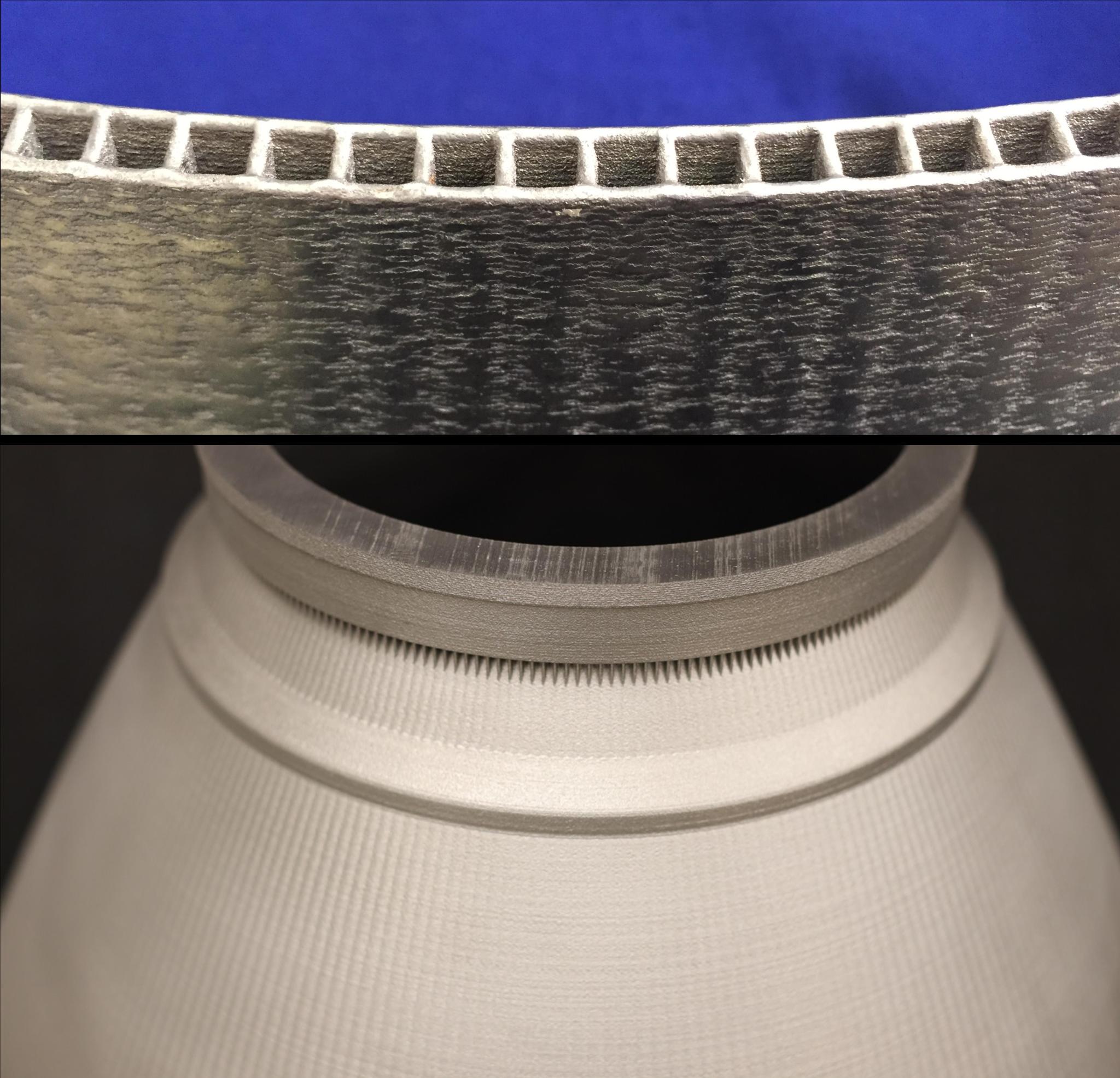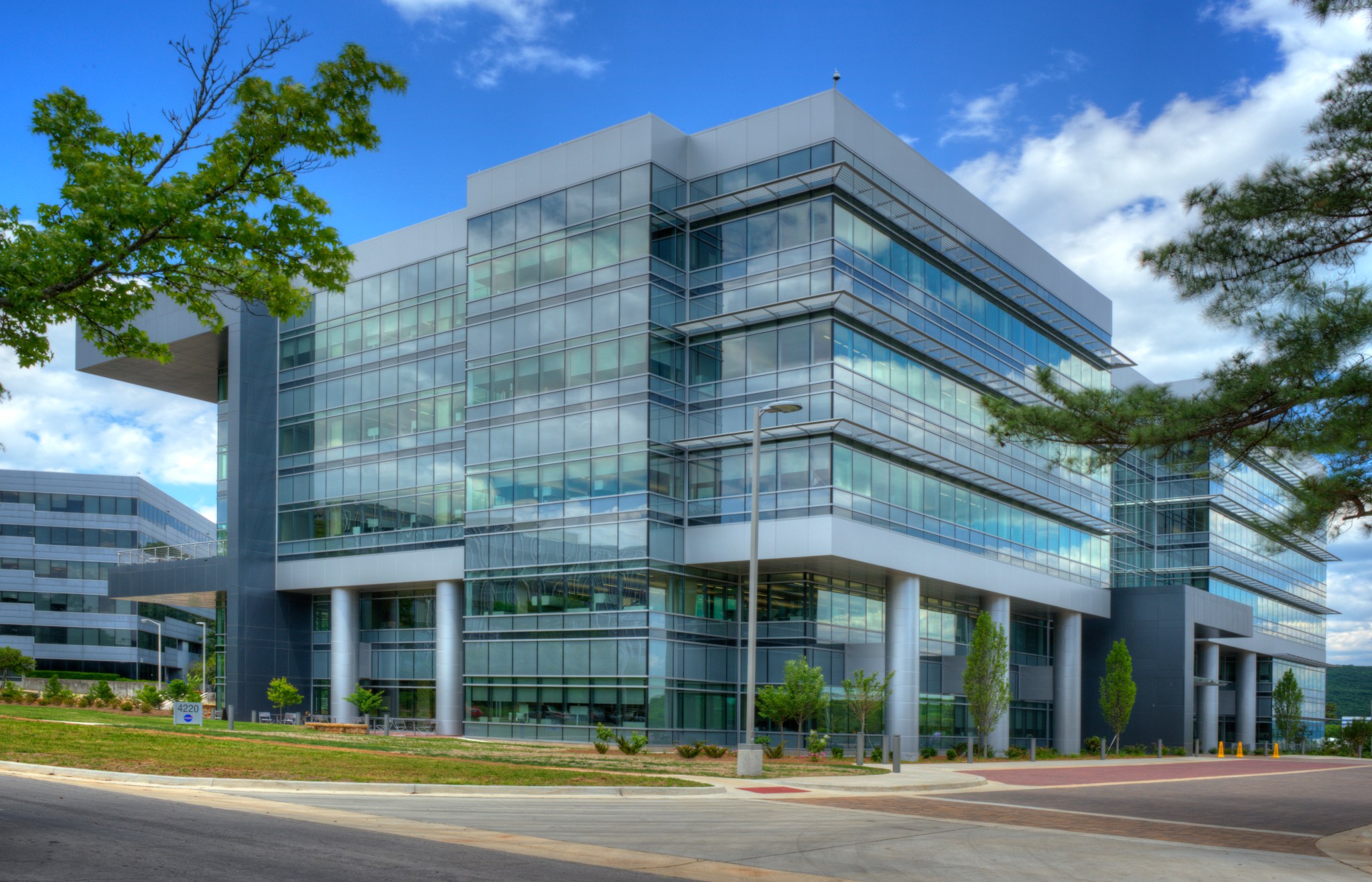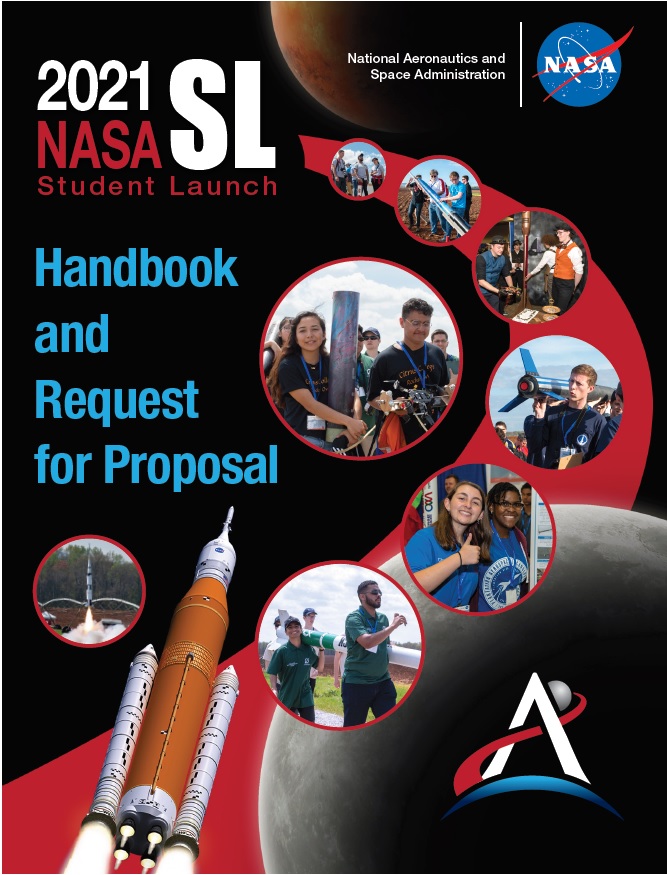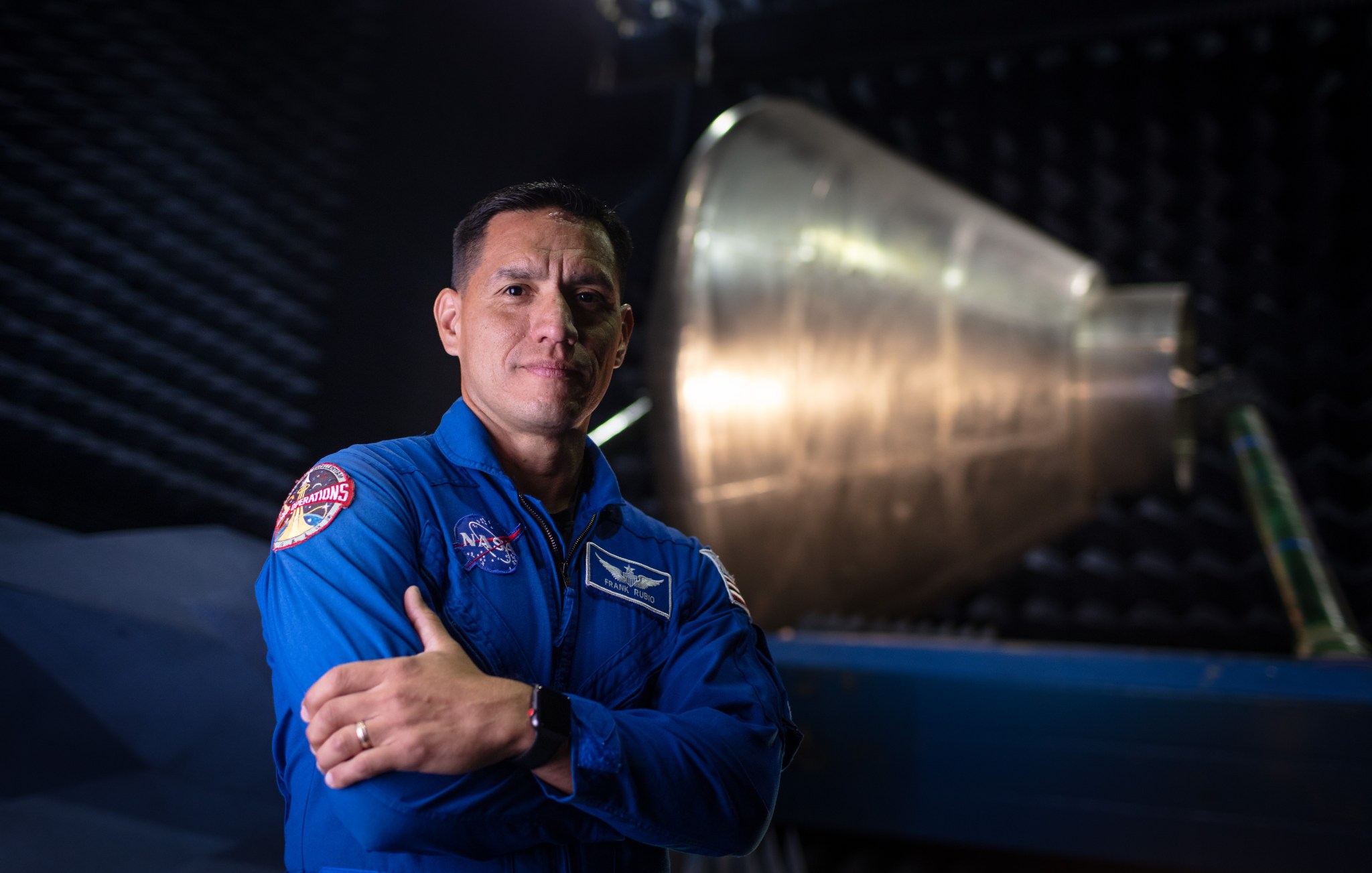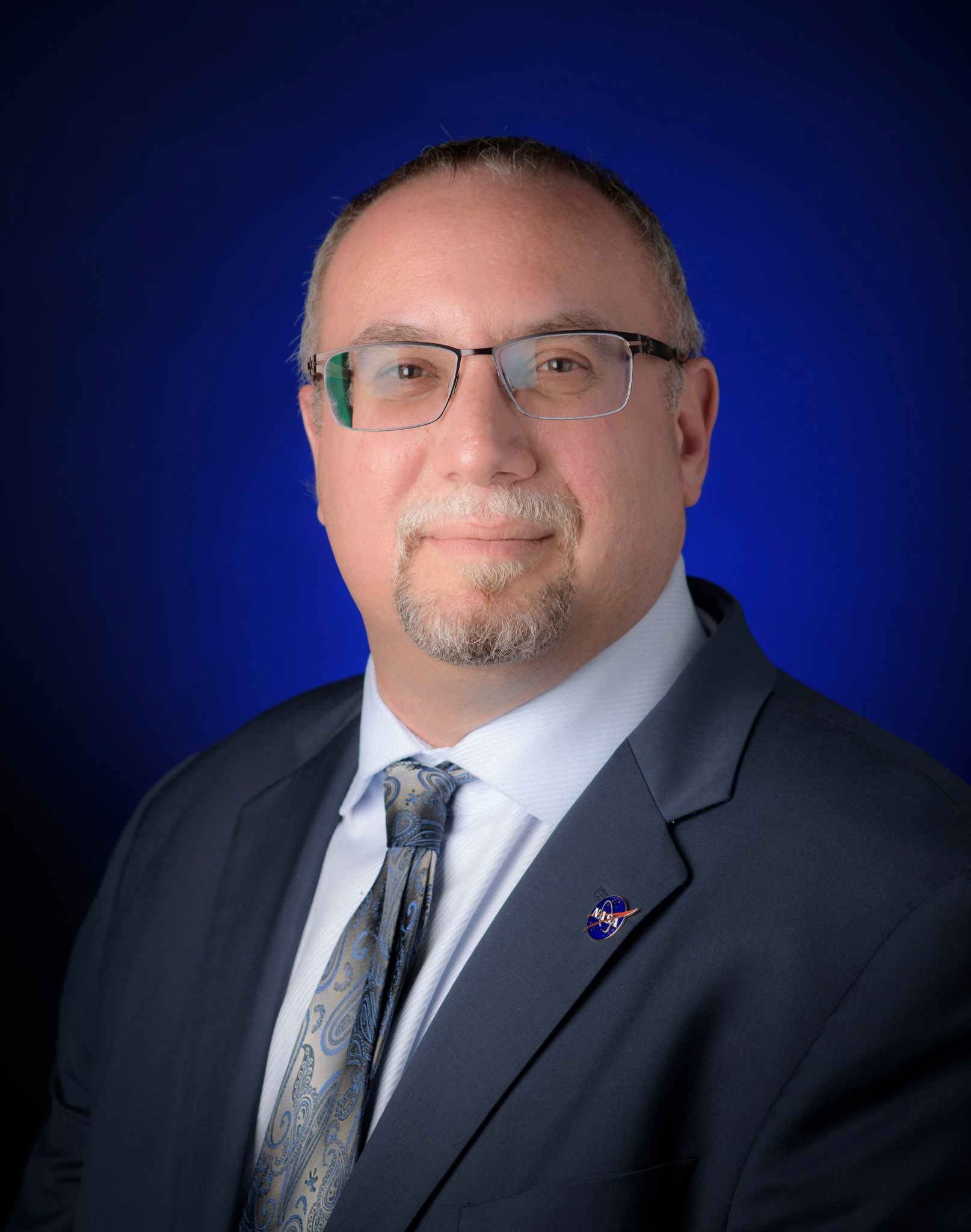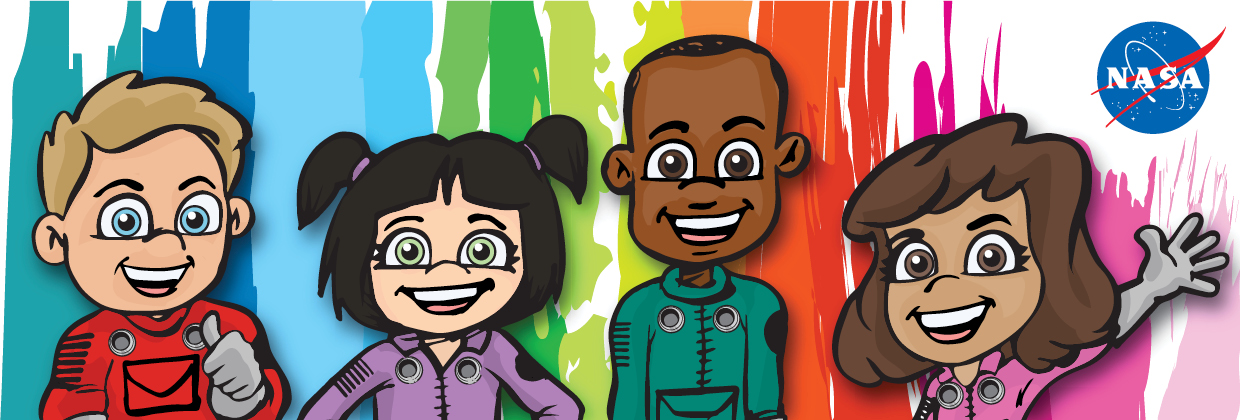In This Week’s Star
- Take 5 with Loucious Hires
- Future Rocket Engines May Include Large-Scale 3D Printing
- Marshall, NASA Align Schedules with Quiet Friday
- It Actually Is Rocket Science: 2021 Student Launch Competition Opens
- SLS Program Manager John Honeycutt to Deliver Mission Success is in Our Hands Lecture
- NASA Astronaut Frank Rubio to Headline Marshall Hispanic Heritage Month Event Sept. 23
- Mike Gold, NASA Acting Administrator for International Relations, to Speak to Marshall Association Sept. 17
- Commercial Crew Launches 2021 Calendar Artwork Contest
- OSIRIS-REx Data Show Trajectories of Bennu Particles, Highlighted on ‘This Week @NASA’
- This Week in NASA History: SA-7 Launches – Sept. 18, 1964
Take 5 with Loucious Hires
Loucious Hires has a long history in government service. After leaving his small hometown of Roberta, Georgia, at age 17, he lent his skills to the Army, Secret Service, Customs and Border Protection, and Veterans Affairs Office before joining NASA in 2014.
Since becoming the director of the Office of Diversity and Equal Opportunity at NASA’s Marshall Space Flight Center, Hires has helped create a more inclusive and equitable center environment through his work in the establishment of various programs, partnerships, symposiums, and events.
Hires recently met virtually with Marshall media specialist Taylor Goodwin to discuss his role in integrating people of all backgrounds at Marshall.
Question: What is the team environment like in ODEO? How are your team members collaborating and supporting each other to maximize success and innovation?
Hires: Our team environment is close-knit and very communicative. We have different generations and different cultures represented in our team, and a lot of the innovation comes from pooling these varied backgrounds and experiences to achieve a common goal. Our events are always tied to a strategic goal or objective to bring workforce unity and inclusion to our center.
Question: What kind of partnerships is your team pursuing to help put the first woman and next man on the Moon by 2024?
Hires: This is what our Unity campaign is all about. We’re making sure we have a workforce unified around a clear vision, diverse and talented teams, the best candidates going through our employee development and leadership programs, and making the steps necessary to achieve the mission. We work with HR, legal, and management and encourage them to have processes in place to help ensure that all people – specifically people that may have been marginalized in the past – have the opportunity to grow, contribute, and develop. This is for all regardless of their identity. We encourage organizations to have diverse, inclusive panels to ensure equal representation for everyone. When we say diverse, we not only mean diversity of skill and organizations, but race, age, and gender diversity to help us overcome those unintentional biases.
Question: How does your team define and achieve mission success?
Hires: We’re in the people business, and if we aren’t helping other people, then we aren’t succeeding. We base our solutions on moral, ethical, and legal factors. It is great that the agency added inclusion as a core value. An inclusive and welcoming climate embraces differences and offers respect in words and actions for all people. I think that it is important to note that while an inclusive group by definition differs, a diverse group isn’t always inclusive. We encourage organizations and people to recognize the impact of unconscious or implicit bias, and this will help organizations to be deliberate about addressing issues of inclusivity. We also review data with the BRIDGE – Blueprint to Reinforce Inclusivity and Diversity to Gain Equity – champions and cross-reference it with information from the Federal Employee Viewpoint Survey. With these, we monitor and track positive trends in areas where we may have had some concerns or where inclusion appears to be lacking. When people feel that we have inclusion and equity in line with the three base factors mentioned previously, then they will be more inclined to succeed.
Question: How has your team addressed recent events of civil unrest? How well do you think the Marshall community has responded?
Hires: We’ve been involved with a cross-center team to include the Office of Strategic Analysis & Communications, Human Resources, Legal, Human Exploration Development & Operations, Engineering, center leadership and so on. We’ve spoken with close to a thousand people now. I have been so pleased with the openness and the willingness of people to share their experiences and listen to the experiences of their colleagues. As a center, I’m very proud of our response, but I am even more proud of the fact that no one is settling. No one is saying, “OK, we’ve done enough.” Instead of being defensive, everyone is just trying to determine what we can do next to make Marshall a better and more inclusive environment for all team members.
Question: What advice do you have for students and young professionals who want to be involved in NASA’s mission?
Hires: I would say that if this is your dream, chase it. When you pursue what you want to do, you will never work a day in your life. Find your “you.” Search for what defines you and makes you happy, and stick to it. Next I would tell them that nothing happens by circumstance. Lay out a plan for how you will achieve your goals. Personally, I didn’t have a clear charted path, but I knew what I wanted to do. I had to travel different roads to get there, but I kept that vision of making a difference in mind. So chase what you want to do and not what other people want you do. Don’t let anyone deter you from being part of something great.
Goodwin, an ASRC Federal/Analytical Services employee, supports Marshall’s Office of Strategic Analysis & Communications.
Previous Take 5s
Deborah Crane, Commercial Crew Program launch vehicle chief engineer
Angie Jackman, project manager for the Mars Ascent Vehicle
Rhega Gordon, Marshall’s chief financial officer
Robert Champion, director of Michoud Assembly Facility
Bill Marks, deputy director of Marshall’s Office of Center Operations
Katherine Van Hooser, Marshall’s chief engineer
Bobby Watkins, manager of the Human Exploration Development & Operations Office at Marshall
Neil Rodgers, director of the Office of the Chief Information Officer at Marshall
Lisa Watson-Morgan, manager of NASA’s Human Landing System Program
Mary Beth Koelbl, deputy director of Marshall’s Engineering Directorate
Future Rocket Engines May Include Large-Scale 3D Printing
By Will Bryan
As part of the Artemis program, NASA is returning astronauts to the Moon, where the agency will prepare for human exploration of Mars. Additive manufacturing, or 3D printing, experts from NASA, industry, and academia are pioneering methods to print the rocket parts that could power those journeys.
NASA’s Rapid Analysis and Manufacturing Propulsion Technology project, or RAMPT, is advancing development of an additive manufacturing technique to 3D-print rocket engine parts using metal powder and lasers. The method, called blown powder directed energy deposition, could bring down costs and lead times for producing large, complex engine components like nozzles and combustion chambers. Prior developments in additive manufacturing did not have the large-scale capabilities this emerging technology provides.
“This technology advancement is significant, as it allows us to produce the most difficult and expensive rocket engine parts for a lower price tag than in the past,” said Drew Hope, manager of NASA’s Game Changing Development Program, which funds the RAMPT project. “Further, it will allow companies within and outside of the aerospace industry to do the same and apply this manufacturing technology to the medical, transportation, and infrastructure industries.”
The printing method injects metal powder into a laser-heated pool of molten metal, or melt pool. The blown powder nozzle and laser optics are integrated into a printhead. This print-head is attached to a robot and moves in a pattern determined by a computer building one layer at a time. The fabrication method has many advantages, including the ability to produce very large pieces – limited only by the size of the room in which they are created. It can also be used to print very complex parts, including engine nozzles with internal coolant channels. Rocket engine nozzles that contain internal coolant channels run cryogenic propellant through the channels to help keep the nozzle at safe temperatures.
“It’s a challenging process to manufacture the nozzles traditionally, and it can take a very long time,” said Paul Gradl, RAMPT co-principal investigator at NASA’s Marshall Space Flight Center. “Blown powder directed energy deposition additive manufacturing allows us to create very large-scale components with complex internal features that were not previously possible. We’re able to significantly reduce the time and the cost associated with the fabrication of channel-cooled nozzles and other critical rocket components.”
The RAMPT team recently used the technique to produce one of the largest nozzles NASA has printed, measuring 40 inches in diameter and standing 38 inches tall, with fully integrated cooling channels. This nozzle was fabricated in record time – just 30 days compared with nearly one year using traditional welding methods – and completion occurred a year earlier than scheduled due to the technology advancing rapidly.
The RAMPT project’s success has garnered the attention of NASA’s Space Launch System rocket team. NASA’s SLS, along with the Orion spacecraft, are the backbone to the agency’s deep space exploration plans, including sending the first woman and next man to the Moon in 2024 and establishing sustainable exploration by the end of the decade. The SLS Program is investing in RAMPT’s blown powder directed energy deposition fabrication process with the goal of certifying it for spaceflight. Together with RAMPT, the team is using the technique to build and evaluate a channel-cooled nozzle that is up to 5 feet in diameter and almost 7 feet tall.
“Producing channel wall nozzles and other components using this new type of additive manufacturing would enable us to make the SLS engines at the scale required with a reduced schedule and reduced cost,” said Johnny Heflin, Liquid Engines Office manager for the SLS Program.
Through a series of rigorous hot fire tests, engineers will subject a subscale version of the nozzle to the same 6,000-degree Fahrenheit combustion temperatures and sustained pressures it would face during launch to demonstrate the durability and performance of the new directed energy deposition technology.
While NASA is leading the expedition of technology development, partnerships with academia and industry play an important role. Through an agreement with Auburn University in Alabama, RAMPT collaborates with specialty manufacturing companies already advancing the state of the art, bolstering their work and making the technologies developed by this team available widely to the private sector. These public-private partnerships also add value to NASA missions, as partners share some development costs.
NASA’s investments in blown powder direct energy deposition fabrication technology and materials development will play a critical role in enabling the agency’s most ambitious exploration missions. The technology may also play critical roles in many other industries, including commercial space, helping make the world a better place one print at a time.
RAMPT includes partners from across the agency, including NASA’s Glenn Research Center, NASA’s Ames Research Center, industry, and academia.
Bryan, an ASRC Federal/Analytical Services employee and Marshall Star editor, supports the Office of Strategic Analysis & Communications.
Marshall, NASA Align Schedules with Quiet Friday
By Taylor Goodwin
Beginning Sept. 25, NASA’s Marshall Space Flight Center will join other NASA centers in adopting Quiet Friday – an agencywide day dedicated to minimizing distractions and enhancing work-life balance.
Under this new initiative, all NASA centers will continue to operate under normal business hours, but centers, programs, projects, and organizations are encouraged not to schedule recurring meetings – other than those required to accomplish the mission – on the second Friday of each pay period.
“The intent is to allow employees to focus on work priorities and deadlines without meeting interruptions,” NASA Associate Administrator Steve Jurczyk said. “It will also allow for better work-life balance by providing employees an opportunity to take a day off, or catch up on work obligations, without feeling the pressure of scheduled meetings.”
To the maximum extent possible, the agency is encouraging telework on Quiet Friday. If compatible with their schedules, civil servants will have the option to flex time to work 80 hours over nine days, or to work an alternate schedule with permission from their supervisors. Contractors working at a NASA facility should follow their respective company’s guidance for schedule adjustments.
In order to align Marshall’s operations with the agency’s Quiet Friday, the center is shifting its Flex Friday from the first Friday of each pay period to the second Friday of each pay period. Marshall’s Flex Friday began in fiscal year 2019 as an initiative to align the center’s existing use of flexible work schedules, including telework, to garner utility cost and facility operations cost savings. Like Quiet Friday, this schedule allowed flexible work arrangements for employees to encourage a healthy work-life balance. Thousands of schedules were unified around the center, which led to increased productivity among the workforce and even allowed the center to minimize the inconvenience and costly overtime rates often associated with maintenance of the facility.
By operating a number of buildings in a limited “weekend mode” for just 26 additional days during the year, Flex Friday savings have helped contribute to a variety of improvement projects, including life safety and fire protection systems, parking lot restriping in the 4700 area, elevator reliability improvements, and various exterior maintenance projects. Savings have also allowed the center to reinvest in energy conservation projects like LED lighting. These savings will resume with Quiet Fridays as employees return to on-site work beyond the current COVID-19 pandemic.
“Successfully implementing Flex Friday tested Marshall’s telework capabilities and on-site options to prepare for future emergencies,” Marshall Associate Director Steve Miley said. “Now, Quiet Friday is starting up agencywide to help maintain a balance of communication, collaboration, and individual productivity.”
When mission requirements make Quiet Friday impracticable, leaders are asked to determine other options that will allow employees to have the same opportunities presented by Quiet Friday. Supervisors, managers, project leads, and others should not schedule meetings on Quiet Fridays unless it is mission-essential and not possible to be scheduled on an alternate day. Center directors, mission directors, and officials in charge may approve either a temporary or permanent exception to the Quiet Friday program for an individual, group of individuals, or organization where needed to support mission requirements.
Goodwin, an ASRC Federal/Analytical Services employee, supports Marshall’s Office of Strategic Analysis & Communications.
It Actually Is Rocket Science: 2021 Student Launch Competition Opens
By Will Bryan
It actually is rocket science for the student participants in NASA’s Student Launch competition – one of seven NASA Artemis Student Challenges.
Every year, NASA challenges middle school, high school, college, and university students from around the United States to design, build and test a high-powered amateur rocket, fly it at least 3,500 feet above the ground and complete a landing. In order to compete, interested teams must submit a proposal to the NASA Student Launch program by 3 p.m. CDT Sept. 21. Selected teams will be announced in early October.
The challenge is a little different each year, and the 2021 changes – which include a new payload mission for the college/university division, and provisions established due to the coronavirus pandemic – were unveiled in the Student Launch handbook Aug. 19.
“We are excited for another year of NASA Student Launch and cannot wait to see how the teams tackle the new payload challenge and take their rockets to the next level,” said Fred Kepner, an education specialist and lead for Student Launch at NASA’s Marshall Space Flight Center. Marshall hosts Student Launch for the agency. “We are hopeful we will be able to hold the in-person activities here in Huntsville in April, but we have developed contingencies, so regardless of the pandemic situation, we can still hold the competition and engage with the Artemis Generation.”
Notable changes:
- Teams are permitted to use multiple connections to attend all milestone review sessions, including the preliminary design, critical design, and flight readiness reviews. This alleviates the need for all team members to be in the same room or location during their presentations to the NASA review panel.
- Teams will not be required to travel to Huntsville in April to complete the project and compete. Teams that are unable to travel and participate in the Launch Week activities in person will be permitted to complete their competition launch at a National Association Rocketry or Tripoli Rocket Association-sanctioned launch in their local area.
- The college/university division’s payload mission is a lander that deploys from the rocket during descent. The lander must land upright or contain a system to upright itself. The lander must level itself to within 5 degrees of flat, and then take a 360-degree panoramic image of the location and transmit the image back to the team.
Teams in the middle/high school division can choose the college/university division payload, or they can propose their own scientific or engineering experiment to perform. Middle school and high school teams must also meet specific eligibility requirements – outlined in the handbook – to propose and compete.
Student Launch rockets must fly between 3,500 and 5,500 feet above ground level. The young rocketeers are challenged to “call their shot” and predict their rocket’s altitude months in advance of competition launch day using rocketry principles and computer simulations. Referred to as their “target altitude,” teams can tailor their altitude to maximize the return of scientific value from their payload, just like NASA teams target specific altitudes for their own missions.
The team in each division that comes closest to their target altitude wins the category award. In 2019, the college division winner was just 12 feet off their target, and in 2020, the middle/high school division winner missed their target by 7 feet.
The eight-month Student Launch program begins with the release of the handbook, and requires the Artemis Generation students to meet multiple documentation and presentation milestones with NASA rocketry experts. Teams must also perform education and outreach events to engage with the public and teach and inspire the next generation. Additionally, each team must establish and maintain a social media presence, where they tell their own unique stories. The program ends in April when teams submit their post-launch assessment review.
For 20 years, Student Launch has provided a realistic experience to students that resembles the development, test, and operational lifecycle NASA and industry engineers use when developing and operating new hardware.
Marshall’s Office of STEM Engagement manages Student Launch to stimulate innovation and advance NASA’s mission through collaboration with educational institutions and students – the next-generation that will help NASA explore the Moon and travel even farther to Mars. It also furthers NASA’s goal of attracting and encouraging students to pursue degrees and careers in the science, technology, engineering, and math fields. NASA’s Human Exploration and Operations Mission Directorate and the Office of STEM Engagement, as well as Northrop Grumman and the Huntsville chapter of the National Space Club, provide funding and leadership for the initiative.
For more information about Student Launch, visit here.
Bryan, an ASRC Federal/Analytical Services employee and Marshall Star editor, supports the Office of Strategic Analysis & Communications.
SLS Program Manager John Honeycutt to Deliver Mission Success is in Our Hands Lecture
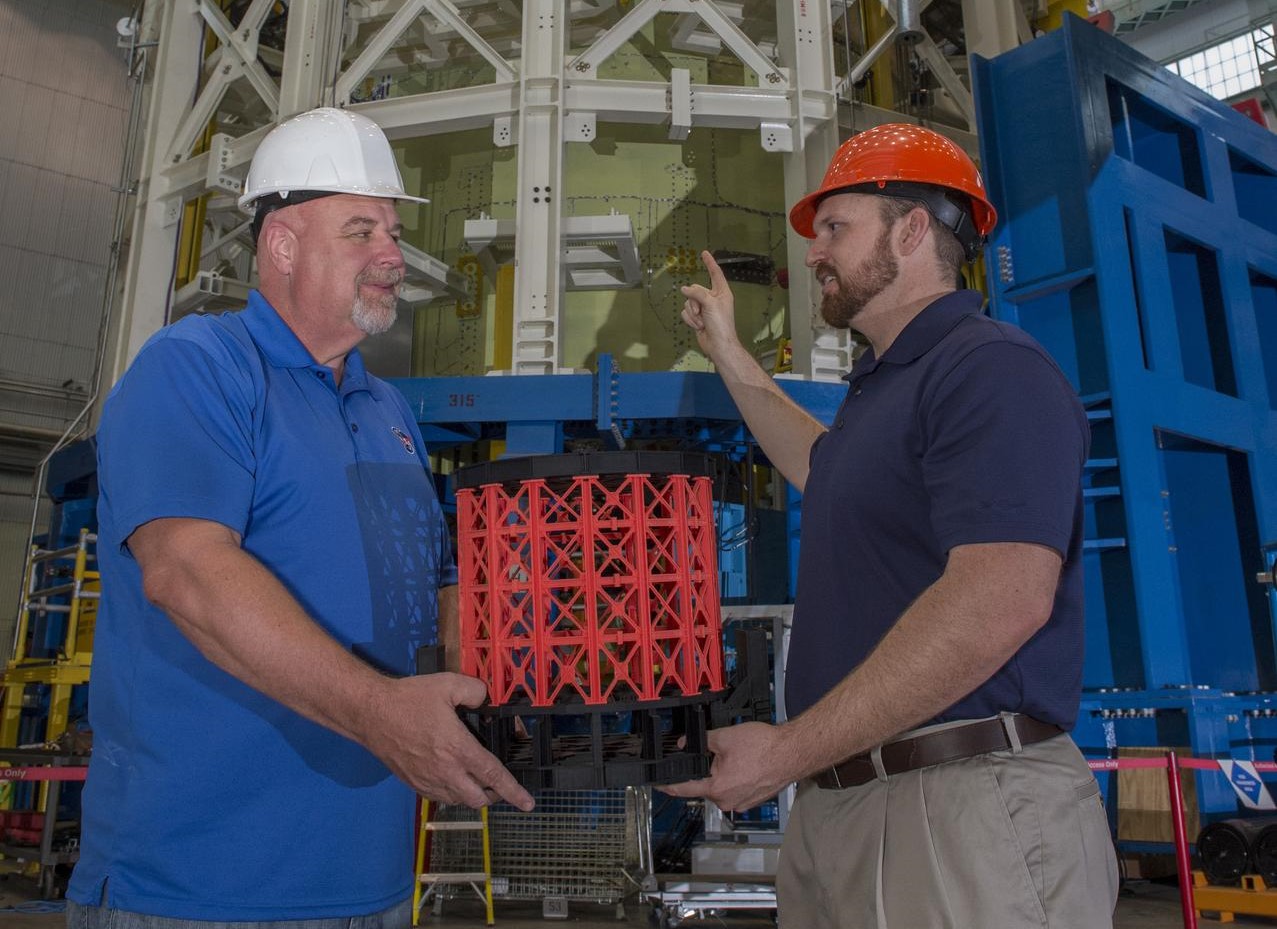
John Honeycutt, left, program manager of NASA’s Space Launch System rocket at the agency’s Marshall Space Flight Center, will give a virtual Mission Success is in Our Hands lecture via Webex at 11:30 a.m. Sept. 17. He will share insights from his more than 30 years supporting and ensuring safety on many NASA programs, including as lead for the Vehicle Propulsion System review for the external tank during the space shuttle Columbia accident investigation. He was also lead engineer for the test, verification, and certification of all Return to Flight II external tank redesigns. The Mission Success Is in Our Hands initiative at Marshall is a campaign led by the Safety and Mission Assurance Directorate and partner Jacobs Engineering of Huntsville that promotes and strengthens Marshall’s focus on mission, hardware, and crew safety. (NASA/Emmett Given)
NASA Astronaut Frank Rubio to Headline Marshall Hispanic Heritage Month Event Sept. 23
Dr. Frank Rubio, part of NASA’s astronaut class of 2017, will be the keynote speaker Sept. 23 for Marshall Space Flight Center’s live, virtual Hispanic Heritage Month celebration. All Marshall team members are invited to participate.
The theme of this year’s heritage month event is “Hispanics: Be Proud of Your Past and Embrace the Future.” Rubio will incorporate that theme into his address, titled “Highlighting the Stars on the Way to Mars.”
His presentation will begin at 2:30 p.m. on Microsoft Teams.
Welcoming Rubio will be Loucious Hires, director of Marshall’s Office of Diversity and Equal Opportunity, which organizes the annual heritage month activities. A question and answer session will follow Rubio’s address.
Rubio, a Florida native, is a former U.S. Army helicopter pilot and combat veteran who served in Bosnia, Afghanistan, and Iraq. He also was a clinic supervisor and flight surgeon at Redstone Arsenal. He is a recipient of the Bronze Star and numerous other Army achievement honors. NASA selected Rubio and the other 11 members of the 2017 astronaut class from among more than 18,000 applicants.
National Hispanic Heritage Month runs from Sept. 15 to Oct. 15 each year, honoring the contributions of Hispanic and Latino Americans throughout the nation’s history, and celebrating their diverse and impactful heritage and culture. The month-long commemoration was enacted into law in 1988.
Mike Gold, NASA Acting Administrator for International Relations, to Speak to Marshall Association Sept. 17
The Marshall Association will welcome Mike Gold, acting associate administrator of NASA’s Office of International and Interagency Relations, Sept. 17. Gold will speak live via Microsoft Teams starting at 11:30 a.m. All Marshall team members are welcome.
Gold, who also provides strategic direction to NASA’s Office of General Counsel and supports the agency’s low-Earth orbit commercialization efforts, will discuss the Artemis Accords, NASA’s plan for leading a safe, peaceful, and prosperous future across the solar system. The Artemis program will land the first woman and next man on the Moon by 2024 to make way for a permanent lunar colony in years to come and a way station for the first crewed missions to Mars.
The Marshall Association, established to build the exchange of innovative idea within the Marshall community, is a self-governing organization of dues-paying NASA civil service employees, contractors, retirees, and community members.
Association members sponsor a monthly speaker program, an annual scholarship program, and other networking and engagement activities, including the popular Racin’ the Station duathlon held each fall. Yearly association membership is $30. Those interested in registering can do so here.
Commercial Crew Launches 2021 Calendar Artwork Contest
NASA’s Commercial Crew Program is partnering with private companies to develop new spacecraft to fly astronauts on NASA missions to the International Space Station. To help kids learn about the program in a fun and creative way, a calendar artwork contest has been launched.
The contest runs through Oct. 28 and is open to children ages 4 to 12. The unique and original winning artwork will be used to create a 2021 calendar, which has a different space-related theme each month. Supplemental education materials will be included for the themes, which include the space station, astronauts, and growing food in space.
At NASA’s Marshall Space Flight Center, the Human Exploration Development & Operations Office supports the Commercial Crew Program with engineers who have helped review critical design and development documentation. The team also supports and provides oversight of safety standards for spacecraft and verifies data. On launch days, members of the team work closely with teams at SpaceX in Hawthorne, California, NASA’s Kennedy Space Center, and NASAs Johnson Space Center to monitor launch conditions.
Visit here for more information about the competition’s themes, rules, deadlines, and artwork form. Children should get their parent’s permission, before entering. After reviewing the NASA contest guidelines, entries can be submitted here. The contest is using the hashtag #CCPArtContest on social media.
OSIRIS-REx Data Show Trajectories of Bennu Particles, Highlighted on ‘This Week @NASA’
NASA’s OSIRIS-REx mission is featured in “This Week @NASA,” a weekly video program broadcast on NASA-TV and posted online.
An animation from the OSIRIS-REx mission shows the trajectories of particles emitted from the surface of asteroid Bennu during several months in 2019. Ongoing examination of Bennu and a sample of the asteroid expected to be returned to Earth, could help the OSIRIS-REx team learn exactly why this phenomenon is occurring. The spacecraft is set to “touch” Bennu and collect that sample Oct. 20.
OSIRIS-REx is a project of the Science Mission Directorate’s New Horizons Program, managed by NASA’s Marshall Space Flight Center.
View this and previous episodes at “This Week @NASA” on NASA’s YouTube page.
Download Link: https://images.nasa.gov/details-A%20Step%20Toward%20Sustainable%20Lunar%20Exploration%20on%20This%20Week%20@NASA%20September%2011,%202020 Credits: NASA
This Week in NASA History: SA-7 Launches – Sept. 18, 1964
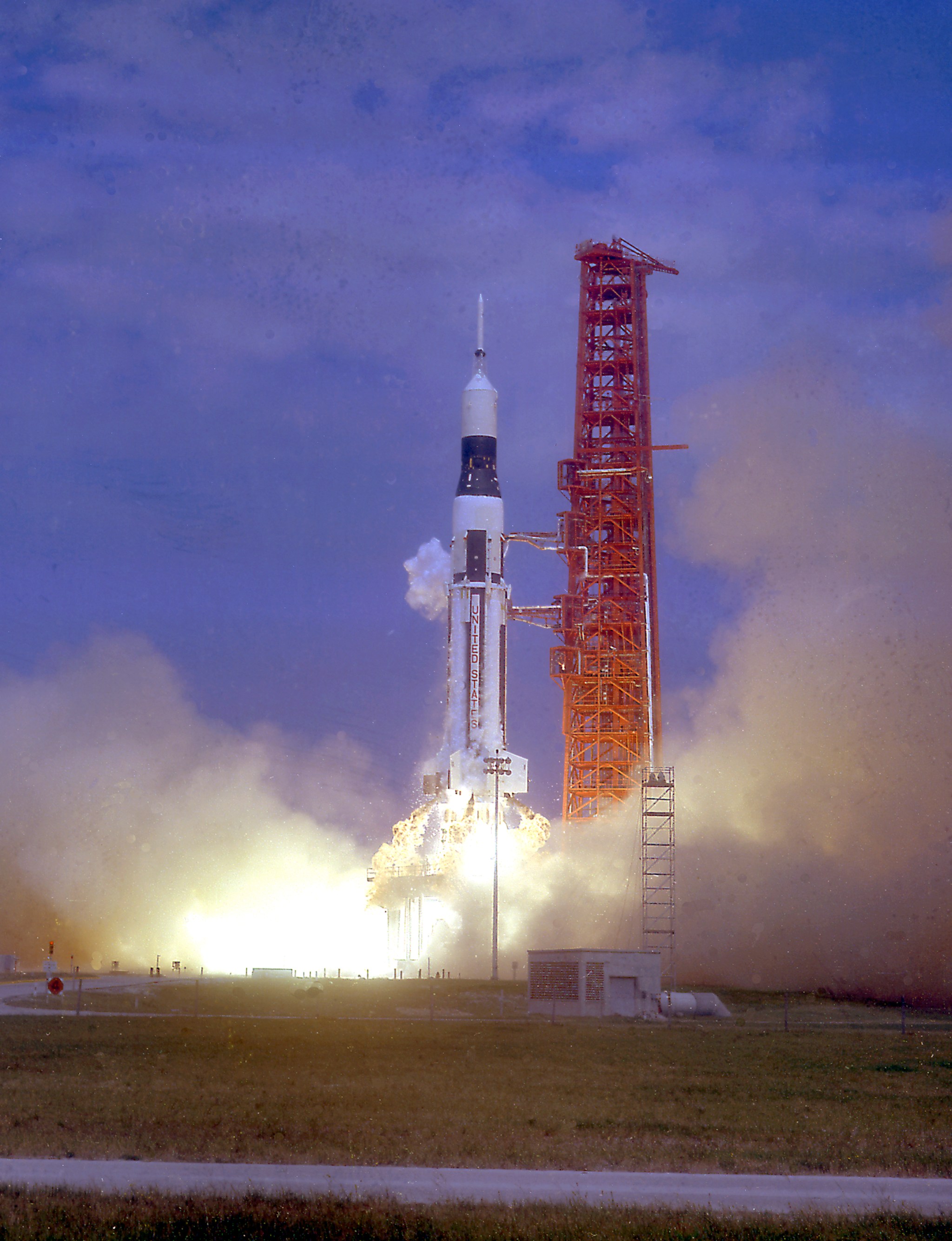
This week in 1964, SA-7 launched from NASA’s Kennedy Space Center. The Saturn I, Block II rocket demonstrated vehicle and spacecraft compatibility and tested the launch escape system. The S-IV upper stage of the rocket consisted of a cluster of six RL-10 engines, which employed liquid oxygen and liquid hydrogen propellants to produce a combined thrust of 90,000 pounds. NASA’s Marshall Space Flight Center designed, developed, and managed the production of the Saturn family of rockets that took astronauts to the Moon. Today, Marshall is playing a vital role in the Artemis program by developing the Space Launch System, the backbone of NASA’s exploration plans and the only rocket capable of sending humans to the Moon and Mars. The NASA History Program is responsible for generating, disseminating, and preserving NASA’s remarkable history and providing a comprehensive understanding of the institutional, cultural, social, political, economic, technological, and scientific aspects of NASA’s activities in aeronautics and space. For more pictures like this one and to connect to NASA’s history, visit the Marshall History Program’s webpage. (NASA)

